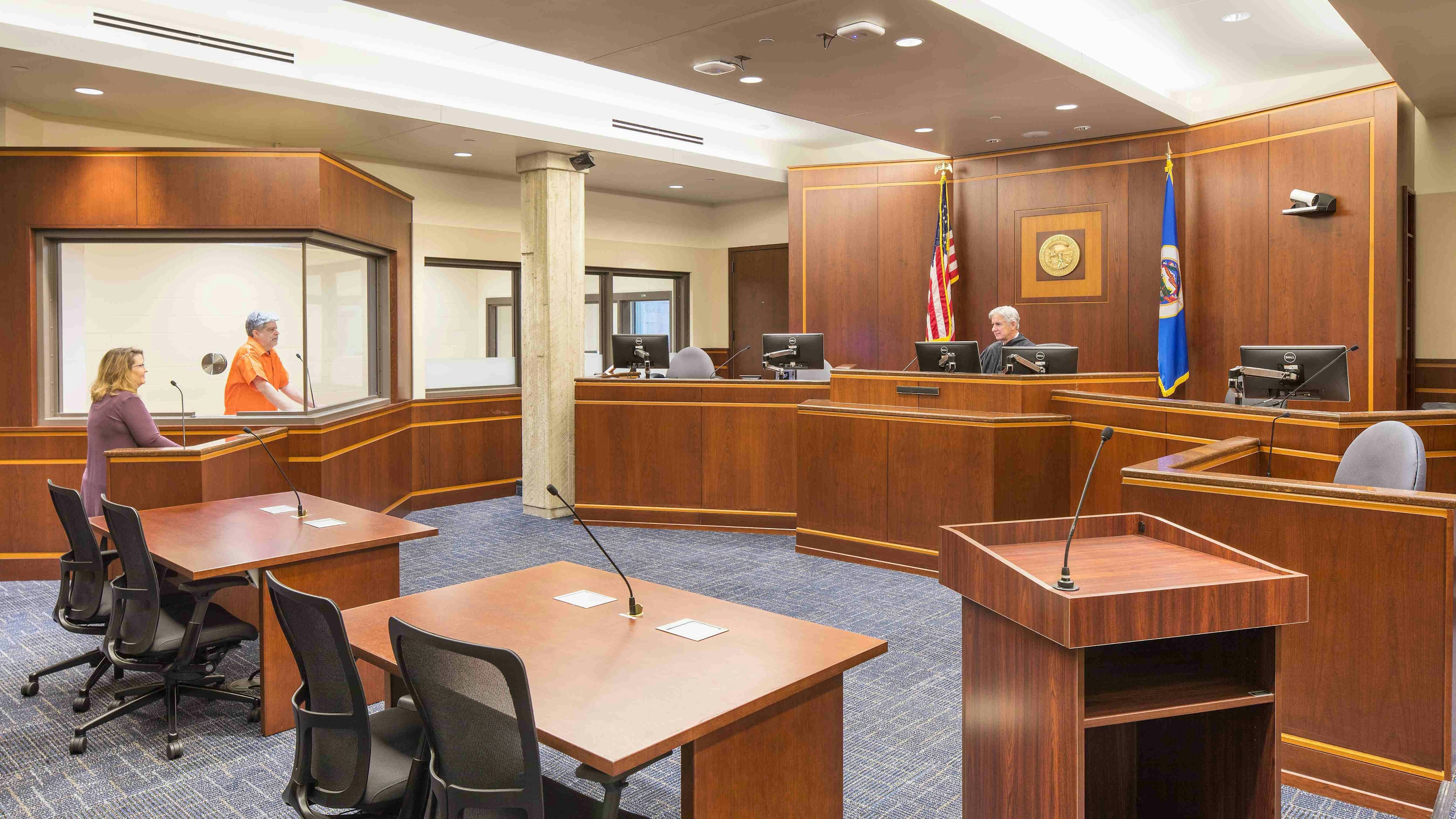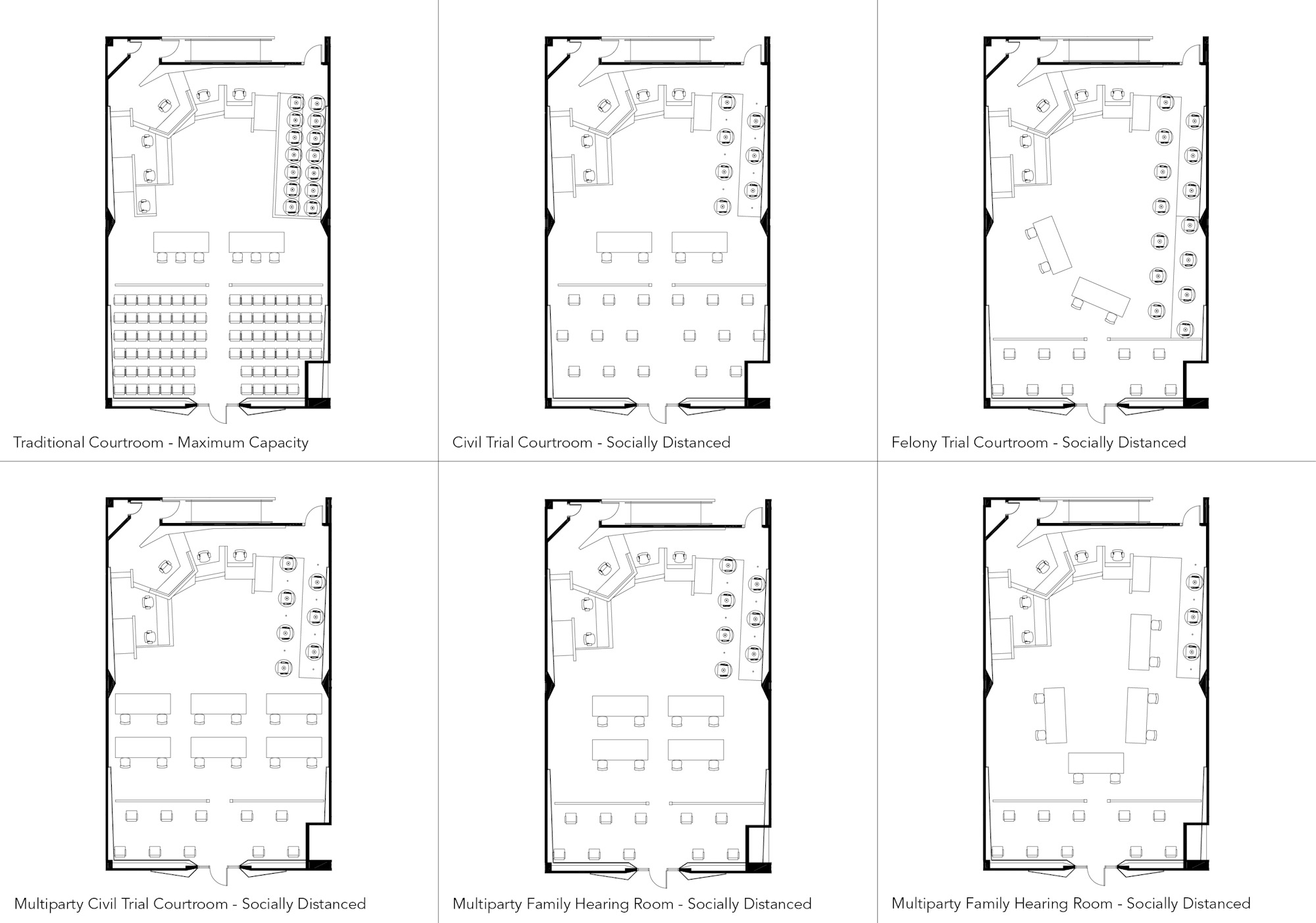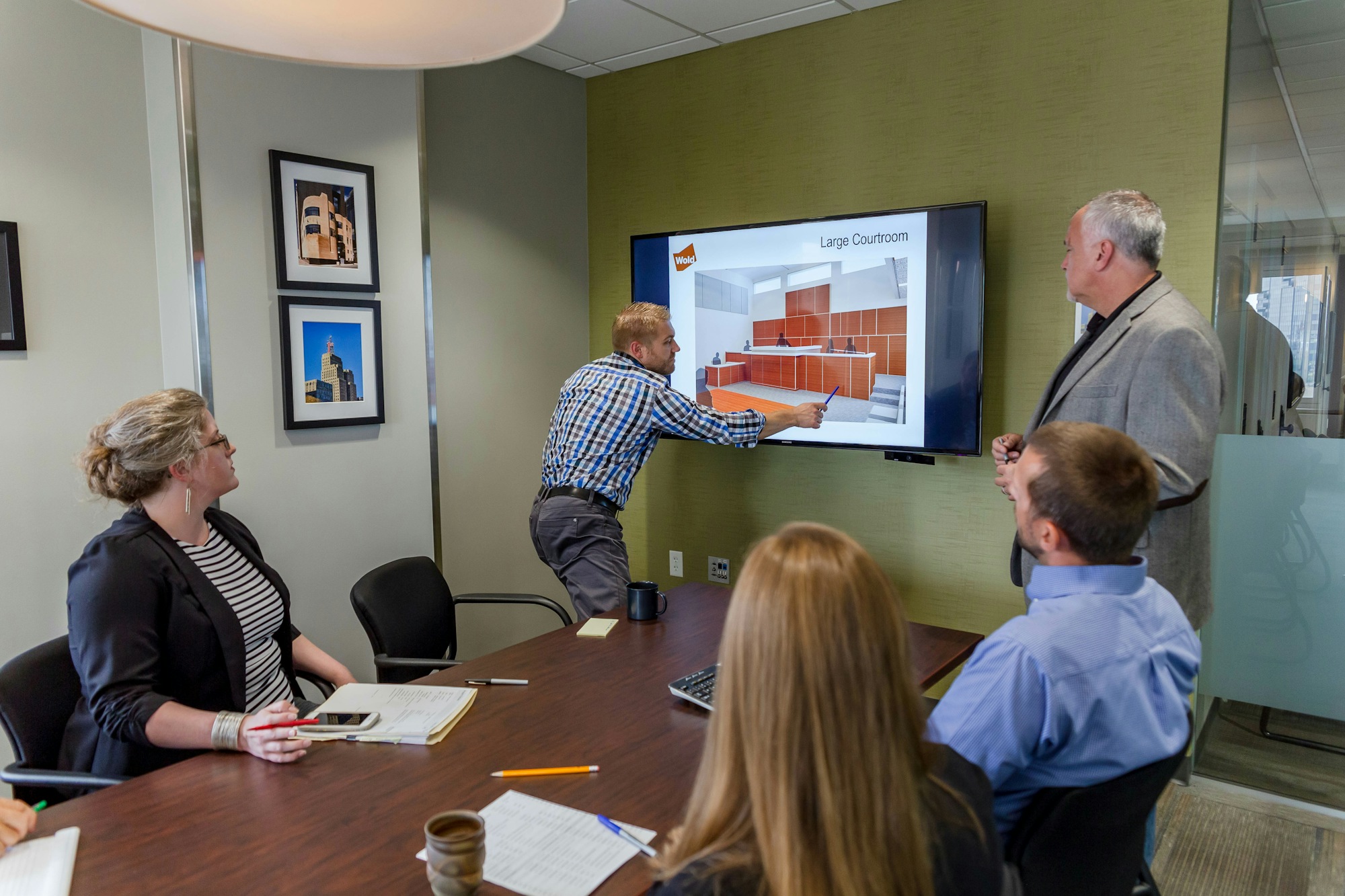
As societal functions begin to return to a sense of pre-pandemic normality, it's essential to look back on the silver linings of the previous year, including new insights for courtroom design. Although this year has come with challenges, our communities have navigated these times with unique judicial processes. Before returning to traditional ways of thinking, we've asked ourselves, what can we learn from this past year? What were some adaptations and operations that occurred during the pandemic that we should consider implementing? How can the design of a courtroom change to accommodate these new learnings? The following includes several potential upgrades for enhanced courtrooms, current examples of these ideas and considerations for your team as you prepare to return to primarily in-person court proceedings.
Why Does It Matter?
With court proceedings having to adjust due to the pandemic, new operational styles had to occur. While these efforts have had their challenges, several beneficial operations were identified. Furthermore, it is our observation that hybrid operations will likely occur in the future. With a backlog of caseload having built up through the pandemic, every opportunity for efficiency needs to be explored. Thus, it is essential to consider what we've learned from the past year and how facility upgrades can address short-term pressures and provide long-term benefits. To meet the timely demands of the upcoming shift to in-person appearances, we believe that courtrooms need to undergo potential upgrades to prepare for a hybrid operational model. These changes include enhancements from both a physical and technological standpoint. While improving the efficiency of courtroom proceedings, these enhancements shall also protect the values of many jurisdictions.
Physical Considerations:
An overarching learning during the pandemic has been incorporating flexibility in the judicial process while also retaining its sanctity. We've learned that there are times where facilities need to be adjusted spatially to accommodate for social distancing. Courtrooms, traditionally, are built with most elements fixed to convey the stability of the judicial process in our society. This also means that most components of a courtroom are built-in with minimal flexibility. We believe that moving forward, more of the physical elements within a courtroom need to be flexible. We're not recommending that all functions of a courtroom should be movable. Elevated sections such as the judge's bench and witness stand should stay built-in to preserve their integrity and importance. While, certain functions could be designed to accommodate a wide variety of flexible uses.
One consideration is that the dividing line between the spectator seating and the well of the courtroom could be flexible and moveable. Another consideration could be building in flexibility for the jury box and witness box. If these functions can change location or size, courtrooms could adjust their floor plans for certain types of trials or hearings. For instance, by scaling a jury box in size, courtrooms could ensure proper accommodation for either social distancing or larger groups for voir dire. Depending on the number of parties involved in a case or the need for public seating, courts could also adjust the location of the rail to provide for either more counsel tables or public seating. While these may provide short-term benefits, we also see several long-term benefits for these adjustments.
By having fewer built-in items in a courtroom, we believe that courts could also adequately prepare for changing circumstances that may arise. By having a flexible courtroom, other functions could even take place. In return, this would improve the efficiency of operations for courtrooms. Additionally, flexibility ensures that courtrooms are prepared for trials with varying needs. The courtroom could adjust spatially to ensure proceedings would take place safely and impartially while accommodating everyone.

Technology Considerations:
One silver lining of the pandemic has been the growth of technology in the judicial process. As a firm, we've heard positive reception towards utilizing virtual hearings for their benefits involving safety, efficiency, flexibility and anecdotal evidence of lower missed appearances. While we understand that many jurisdictions won't continue to operate in a primarily remote manner, we envision needing to support a hybrid model that utilizes both in-person and virtual functions. A hybrid model will be needed because court operations will want to retain the benefits found over the past year, and the transition from remote to in-person courts will likely be gradual. This transition period may include calendars where one case is entirely virtual, followed by another where all participants are in-person. Then, the following case could feature a mix of participants live and virtual. Thus, all court design should allow for virtual participation. To be prepared for evolutionary changes in judiciary functions, we provide several technological upgrades that coincide with physical upgrades mentioned in the previous section.
We believe all courtrooms should allow for the use of web-based video conferencing functionalities, such as Zoom©, WebEx© and others. While some courtrooms already feature interactive video (ITV), a point-to-point camera system, we think court proceedings should utilize an internet protocol (IP) based system allowing easier access for any participant. Continuing the benefits of this past year, we foresee this technology integration improving efficiency and safety. By integrating web-based video conferencing functions, courtrooms can continue to hold remote hearings for defendants both in and out of custody. Remote hearings can mitigate logistical items such as transportation to the courtroom for in-custody hearings. Meeting with defendants over the video conferencing platform also reduces potential safety threats in the courthouse. While we're not suggesting that all hearings can now be fully remote, integrating web-based video conferencing services allows courtrooms to be prepared if they are needed.
While we see the integration of video conferencing providing a majority of benefits to court proceedings, we acknowledge several challenges that could arise. These include ensuring microphones and other AV equipment in the courtroom are integrated, on the record and do not cause audio interference with each other. Additionally, the placement of screens needs to be optimal to ensure all parties have equal viewing access, including remote participants. Even if every courtroom is outfitted with this capability, court business won’t proceed smoothly if the video feed does not have a stable connection for everyone. So, ensuring that the courthouse has strong enough bandwidth to provide for all of these technological functions simultaneously is critical. To navigate these potential challenges, we recommend working with a team of experts like ourselves to assist in this transformation. Our team of technical engineers are here to guide clients in implementing a technological renovation such as this.

Next Steps and Considerations:
Regardless of where the judiciary and counties are in evaluating their courtroom design needs, we believe it is essential that conversations regarding facility improvements happen now. All counties need to have a facility that supports their short and long-term operational objectives. To begin the discussion regarding improvements, we recommend the questions outlined below to self-evaluate current facilities to analyze where the gaps are and how adjustments can be made. Following this, we recommend working with a team with the proven judicial facility experience to determine the correct configurations. As stated before, our team is readily available to assist in these needs.
We've provided several considerations for your team as you undergo these discussions.
If you need any additional information about how we can assist with courtroom renovations, do not hesitate to reach out to our team at Wold Architects and Engineers (call 1-888-254-6789 or email info@woldae.com). Our multidisciplinary team of professionals would welcome the opportunity to help assess your needs for your courtroom design.